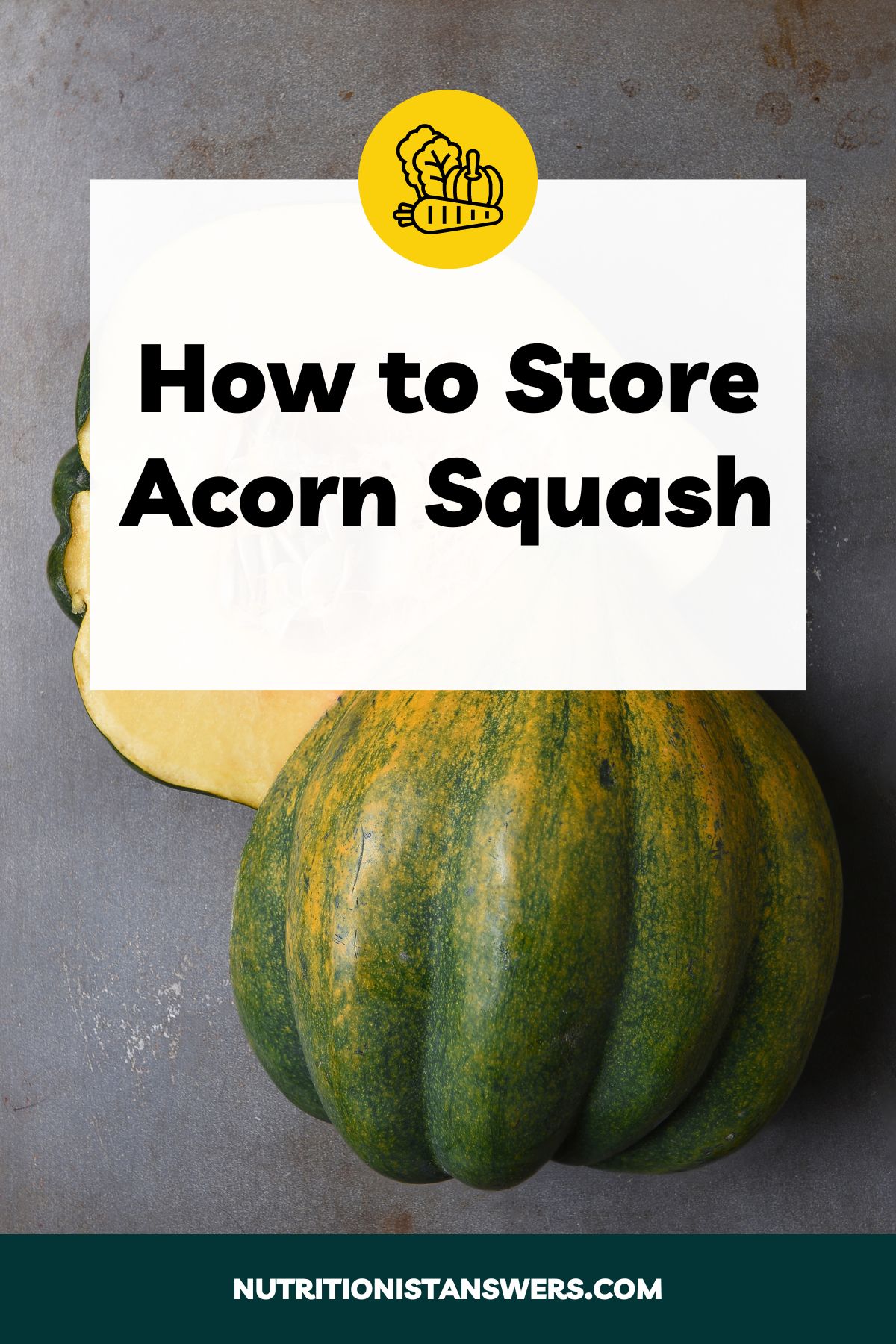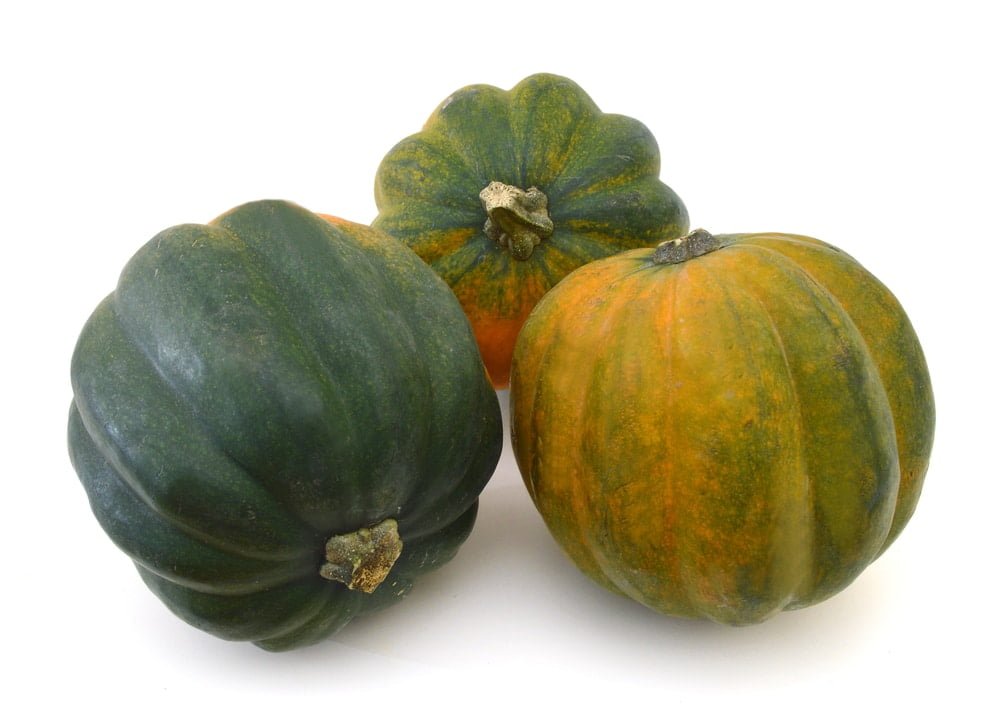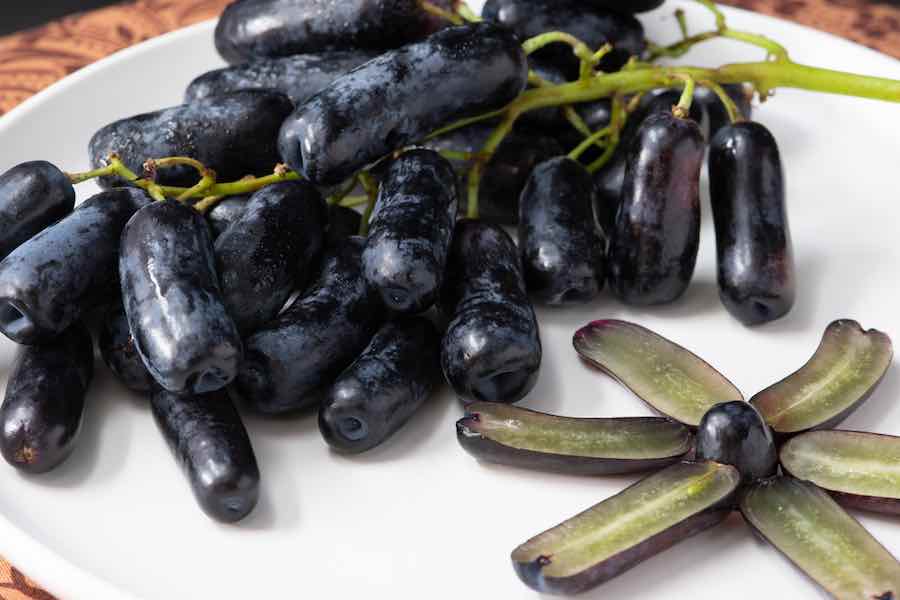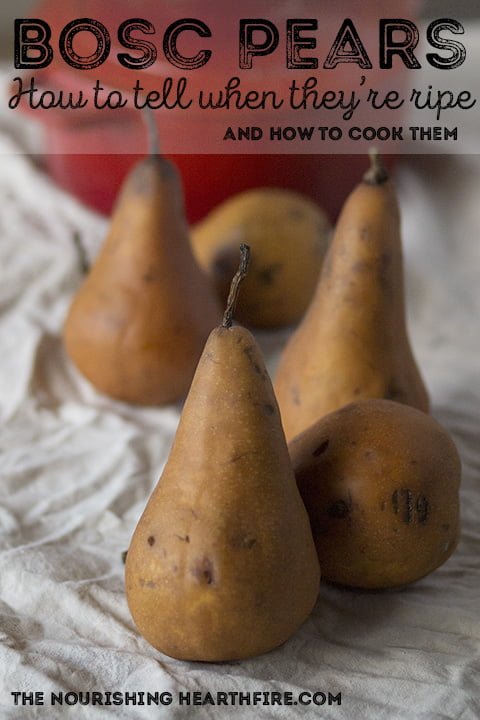When it comes to enjoying the delicious taste of acorn squash, ensuring its maximum freshness is key. But how long can you keep acorn squash before it starts to lose its flavor and texture? In this article, we will uncover the best methods for storing acorn squash to maintain its freshness for as long as possible. From temperature to proper handling, you’ll discover the secrets to prolonging the lifespan of this fall favorite and savoring its mouthwatering goodness for future meals. So, let’s dive into the world of acorn squash storage and unlock the tricks to preserving its delectable taste.

Choosing Fresh Acorn Squash
When it comes to selecting the right acorn squash, there are a few factors to consider. The key is to find a squash that is fresh, firm, and free from any signs of damage or bruising. By following these guidelines, you can ensure that you are getting the best quality acorn squash for your recipes.
Inspecting the Squash’s Appearance
The first step in choosing fresh acorn squash is to inspect its appearance. Look for a squash that has a vibrant, deep green color. Avoid any squash that has a dull or faded color, as this may indicate that it is past its prime. Additionally, check for any soft spots or blemishes on the surface of the squash. A smooth and unblemished skin is a good indication of freshness.
Checking for Firmness
Next, gently press on the acorn squash with your fingertips. If it feels firm and gives slightly under pressure, then it is likely fresh and ripe. However, if the squash feels mushy or has significant give, it may be overripe or starting to spoil. Remember, you want a squash that still has some firmness to ensure optimal flavor and texture.
Avoiding Damaged or Bruised Squash
It’s essential to avoid acorn squash that has any signs of damage or bruising. Damaged squash can quickly spoil and may not be safe to consume. Inspect the entire surface of the squash for any cuts, cracks, or bruises. Even a small blemish can indicate that the flesh inside may be compromised.
Considering the Weight
Lastly, consider the weight of the squash when making your selection. A fresh and ripe acorn squash should feel heavy for its size. This heaviness is a sign of moisture content and overall quality. If a squash feels lightweight or hollow when picked up, it may be dehydrated and past its prime.
Preparing Acorn Squash for Storage
Once you’ve chosen your acorn squash, it’s crucial to prepare it properly for storage. Proper preparation helps to prolong the shelf life and maintain the squash’s freshness. By following these simple steps, you can ensure that your acorn squash remains in excellent condition until you’re ready to use it.
Washing the Squash
Before storing your acorn squash, give it a gentle wash under cool running water to remove any dirt or debris on the surface. This step helps to maintain cleanliness and prevent any potential contamination during storage.
Drying the Squash
After washing, it’s important to thoroughly dry the acorn squash. Use a clean towel or paper towels to pat the squash dry. Excess moisture can create an environment that promotes the growth of mold and bacteria, leading to spoilage.
Trimming the Stems
Trimming the stems of the acorn squash is an optional step but can be beneficial for storage. If the stems are long and protruding, they may cause the squash to roll and become unstable. Use a sharp kitchen knife to carefully trim the stems to about an inch in length, creating a more stable base for the squash.
Removing Any Visible Dirt
In addition to washing the squash, make sure to remove any visible dirt or soil. Use a vegetable brush or a clean cloth to gently scrub the surface of the squash and remove any stubborn dirt. Cleanliness is crucial for long-term storage and ensures that the squash stays fresh and free from any contaminants.
Piercing the Skin
Some individuals prefer to pierce the skin of the acorn squash before storing it. This step helps to prevent any potential buildup of pressure inside the squash, which can occur during storage. Using a sharp fork or skewer, lightly pierce the skin of the squash in a few places. Be careful not to cut through the flesh entirely.
Optional: Scooping out the Seeds
While not necessary for storage, you may choose to scoop out the seeds of the acorn squash before storing it. This step can save you time when you eventually prepare the squash for cooking. Use a spoon or ice cream scoop to remove the seeds and any stringy pulp. Rinse the seeds thoroughly and set them aside for roasting or future use if desired.

Storing Acorn Squash at Room Temperature
If you plan to use your acorn squash within a week or two, storing it at room temperature can be an excellent option. Proper storage conditions will help maintain the freshness and flavor of the squash until you’re ready to enjoy it. Follow these guidelines to store your acorn squash effectively at room temperature.
Ideal Room Temperature for Storage
The ideal room temperature for storing acorn squash is between 50 to 60 degrees Fahrenheit (10 to 15 degrees Celsius). It’s important to avoid storing the squash in areas that are too warm, as this can accelerate the ripening process and lead to spoilage. A cooler part of your kitchen or pantry is a suitable location for storing acorn squash.
Choosing a Suitable Storage Area
Select a storage area that is well-ventilated and protected from direct sunlight. Exposure to sunlight can cause the squash to deteriorate more quickly and may lead to changes in flavor and texture. Additionally, avoid storing the squash near other fruits or vegetables that produce ethylene gas, such as apples or bananas, as this gas can hasten the ripening process.
Arranging Squash in a Single Layer
When storing acorn squash at room temperature, it’s best to arrange them in a single layer. Avoid stacking the squash on top of one another, as this can lead to increased pressure and potential bruising. If you have multiple squash, consider using a wire rack or wooden crate to keep them separate and allow for proper airflow.
Regularly Checking for Spoilage
It’s essential to check your stored acorn squash regularly for any signs of spoilage. Inspect the squash for changes in color, soft spots, or unpleasant odors. If you notice any spoilage, it’s best to discard the affected squash to avoid contamination of the remaining ones.
Utilizing the ‘First In, First Out’ Principle
To ensure that your acorn squash remains fresh, practice the ‘first in, first out’ principle. This means using the oldest squash in your storage first and rotating the newer ones to the back. By doing so, you can minimize the risk of any squash going bad or being forgotten, ensuring that you make the most of your fresh produce.
Storing Acorn Squash in the Refrigerator
If you’re looking to extend the shelf life of your acorn squash, refrigeration can be an excellent option. However, keep in mind that refrigeration can affect the texture and flavor of the squash. Follow these steps to store acorn squash in the refrigerator properly and maintain its quality for a more extended period.
Determining When to Refrigerate
Refrigeration is best for acorn squash that you plan to store for more than a week. If you intend to use the squash within a few days, storing it at room temperature is sufficient. The colder temperatures in the refrigerator can slow down the ripening process and help prolong the shelf life of the squash.
Preparing Squash for Refrigeration
Before placing the acorn squash in the refrigerator, ensure that it is dry and free from any dirt or debris. Use a clean, damp cloth to wipe the surface if necessary. Excess moisture can lead to the growth of mold or bacteria, which can cause spoilage.
Using Perforated Plastic Bags
To maximize the shelf life of acorn squash in the refrigerator, it’s recommended to store them in perforated plastic bags. These bags allow for airflow while still maintaining the appropriate level of humidity. Avoid using non-perforated plastic bags, as they can trap moisture and promote rotting.
Arranging Squash in the Crisper Drawer
The crisper drawer in your refrigerator is an ideal location for storing acorn squash. It provides a controlled environment with slightly higher humidity, which helps to preserve the freshness and texture of the squash. Place the squash in the crisper drawer, ensuring that they are not overcrowded and have enough space for air circulation.
Checking for Any Signs of Decay
Even when stored in the refrigerator, it’s important to regularly check your acorn squash for any signs of decay. Inspect the squash for discoloration, mold growth, or soft spots. If you notice any of these signs, discard the affected squash promptly to prevent the spoilage from spreading to the others.

Freezing Acorn Squash for Long-Term Storage
If you have an abundance of acorn squash and want to preserve it for an extended period, freezing is a great option. Freezing acorn squash allows you to enjoy its taste and nutritional benefits even when it’s out of season. Follow these steps to freeze acorn squash properly for long-term storage.
Choosing the Right Squash for Freezing
Select acorn squash that is ripe and in its prime for freezing. Avoid using squash that is overripe or starting to show signs of spoilage, as this can affect the quality of the frozen squash. Opt for squash with firm flesh and vibrant color for the best results.
Blanching the Squash
Blanching the squash before freezing helps to preserve its flavor, color, and texture. Start by preparing a large pot of boiling water and a separate bowl of ice water. Carefully place the acorn squash in the boiling water and blanch for 2-3 minutes. Then, quickly transfer the squash to the ice water bath to stop the cooking process.
Cooling and Draining the Squash
After blanching, allow the acorn squash to cool in the ice water bath for the same amount of time it was blanched. Once cooled, remove the squash from the ice water and pat dry with a clean towel. This step helps to remove excess moisture and prevent ice crystals from forming when frozen.
Packaging the Squash for Freezing
To freeze acorn squash, you have a few options for packaging. You can either use freezer-safe plastic bags or airtight containers. If using plastic bags, remove as much air as possible before sealing. For airtight containers, leave a small amount of headspace to allow for expansion during freezing. Whichever method you choose, make sure to label the packaging with the date for easy reference.
Labeling and Dating the Packages
Properly labeling and dating the packages is essential when freezing acorn squash. Use a permanent marker to write the date of freezing on the packaging. This step ensures that you can keep track of the storage time, making it easier to determine the freshness of the squash later on.
Tips for Extending the Shelf Life of Acorn Squash
To further maximize the freshness and shelf life of your acorn squash, consider these helpful tips:
Keeping Squash Whole Instead of Cut
Once acorn squash is cut, it can deteriorate more quickly. To extend its shelf life, try to keep the squash whole until you’re ready to use it. This way, you can minimize exposure to air and moisture, both of which can accelerate spoilage.
Avoiding Exposure to Heat Sources
Acorn squash should be stored away from direct heat sources, such as stovetops or ovens. Heat can cause moisture to evaporate more rapidly, leading to dehydration and potential spoilage. Keep the squash in a cool and dry environment to ensure optimal freshness.
Storing Away from Ethylene-Producing Produce
Ethylene gas is a natural plant hormone that can speed up the ripening and deterioration of produce. To prevent premature spoilage of your acorn squash, store it away from ethylene-producing fruits and vegetables like apples, bananas, or tomatoes. This will help maintain the quality and freshness of the squash.
Using Airtight Containers or Bags
Whether storing at room temperature, in the refrigerator, or in the freezer, using airtight containers or bags is crucial. Airtight packaging helps to minimize exposure to air, moisture, and contaminants, ensuring that the acorn squash stays fresh and delicious for a more extended period.
Keeping Squash in a Dark and Cool Environment
For optimal shelf life, store your acorn squash in a dark and cool environment. Exposure to light can lead to spoiling, while cool temperatures help to slow down the ripening process. Consider a basement, pantry, or similar location that meets these criteria for storing your squash.

How to Properly Thaw Frozen Acorn Squash
When you’re ready to use the frozen acorn squash, it’s important to thaw it properly to maintain its flavor and texture. There are a few different methods for thawing frozen squash, depending on your time constraints and recipe requirements.
Choosing the Thawing Method
The method you choose for thawing frozen acorn squash depends on how much time you have and your planned use for the squash. The two primary methods are thawing in the refrigerator and using the microwave for quick thawing. Select the method that best suits your needs.
Thawing Squash in the Refrigerator
Thawing frozen acorn squash in the refrigerator is the most common method and requires some advanced planning. Place the sealed package or container of frozen squash in the refrigerator and allow it to thaw slowly overnight or for several hours. Thawing in the refrigerator maintains the best texture and quality.
Microwaving for Quick Thawing
If you need to thaw acorn squash quickly, using the microwave is an option. However, keep in mind that microwave thawing can result in some loss of texture and flavor. Start by removing the frozen squash from its packaging and placing it in a microwave-safe dish. Use the defrost setting or microwave at a low power setting in short increments, checking and stirring the squash frequently until thawed but still slightly firm.
Cooking Frozen Squash Without Thawing
In some cases, you may choose to cook frozen acorn squash without thawing it first. This method is suitable for recipes that involve boiling, roasting, or pureeing the squash. Simply adjust the cooking time accordingly to ensure that the frozen squash is cooked thoroughly.
Using Thawed Squash in Recipes
Once the acorn squash is thawed, you can use it in various recipes just like fresh squash. Whether roasted, sautéed, mashed, or added to soups and stews, the thawed squash will bring a burst of flavor and richness to your dishes. Be sure to adjust the cooking time as needed since the squash will likely be softer than when fresh.
Using Stored Acorn Squash
Stored acorn squash can provide you with delicious and nutritious meals throughout the year. However, it’s essential to inspect the squash before consumption and follow safe practices when cutting and preparing it.
Inspecting Squash Before Consumption
Before using stored acorn squash, take a close look at its appearance and smell. Discard any squash that shows signs of spoilage, such as mold, unpleasant odors, soft spots, or discoloration. Remember, it’s better to be safe than sorry when it comes to consuming fresh produce.
Safe Practices for Cutting and Preparing Squash
When it’s time to prepare your acorn squash for cooking, follow safe practices to avoid any accidents or injuries. Use a sharp knife and ensure stability by cutting on a flat and secure surface. Take caution when separating the flesh from the skin, especially if the squash is firm. Following safe handling practices will help you enjoy your acorn squash without any mishaps.
Cooking Methods for Acorn Squash
Acorn squash can be prepared using various cooking methods, including roasting, baking, steaming, or sautéing. Each method imparts its own unique flavor and texture to the squash. Experiment with different recipes and techniques to find your favorite way to enjoy the versatility of acorn squash.
Delicious Recipes Using Acorn Squash
Acorn squash lends itself well to both savory and sweet recipes, making it a versatile ingredient in the kitchen. Here are a few delicious recipe ideas to inspire your culinary creativity:
Roasted Acorn Squash with Maple Glaze: Cut the acorn squash into slices, drizzle with a mixture of maple syrup, melted butter, and spices, then roast until tender and caramelized.
Acorn Squash Soup: Simmer diced acorn squash with onions, garlic, vegetable broth, and herbs until soft. Blend until smooth, and season to taste. Serve hot with a dollop of sour cream or croutons.
Acorn Squash Risotto: Sauté diced acorn squash with onions and Arborio rice until the rice is toasted. Slowly add vegetable or chicken broth, stirring constantly until the risotto is creamy and the squash is tender.
Stuffed Acorn Squash: Cut the acorn squash in half, scoop out the seeds, and fill the cavity with a mixture of cooked quinoa, vegetables, cheese, and herbs. Bake until the squash is tender and the filling is golden.
Creative Ways to Incorporate Squash in Meals
Aside from the traditional recipes, you can get creative and use acorn squash in various other culinary creations. Here are a few ideas to inspire your imagination:
Acorn Squash Pizza: Thinly slice the acorn squash and use it as a topping for homemade or store-bought pizza. Combine it with other vegetables, cheese, and your favorite sauce for a unique twist on a classic favorite.
Acorn Squash Pancakes: Grate the acorn squash and mix it into your pancake batter for a nutritious and flavorful breakfast. Serve with a drizzle of maple syrup or a dollop of yogurt for added indulgence.
Acorn Squash Curry: Cube the acorn squash and add it to your favorite curry recipe. The sweetness of the squash pairs beautifully with the savory spices and rich flavors of a curry dish.
Acorn Squash Smoothie: Blend cubed acorn squash with your favorite fruits, yogurt, and a touch of honey for a refreshing and nutritious smoothie. The squash adds a velvety texture and a hint of sweetness to your drink.

Signs of Spoiled Acorn Squash
While properly stored acorn squash can last for several weeks or even months, it’s essential to be aware of the signs of spoilage. Detecting these signs allows you to identify when the squash has reached the point of being unsafe or unpleasant to consume.
Detecting Mold or Fungi
Mold or fungi growth on the surface of the acorn squash is a clear indication of spoilage. If you notice any fuzzy or discolored patches, it’s best to discard the squash to avoid consuming potentially harmful microorganisms.
Unpleasant Odor
Spoiled acorn squash may emit a strong or unpleasant odor. If the squash gives off a foul smell or smells fermented, it’s a sure sign that it has begun to spoil. Trust your sense of smell and use your judgment when considering its suitability for consumption.
Softness or Squishy Texture
Fresh acorn squash should have a firm texture. If you notice any soft or squishy spots, particularly around blemishes or cuts, it may indicate that the squash has started to break down and is no longer safe to eat.
Discoloration or Dark Spots
Another sign of spoilage in acorn squash is discoloration or the presence of dark spots. Healthy squash should have a uniform color with no black or brown spots. If you see any abnormal coloring, it is best to err on the side of caution and discard the squash.
Sliminess on the Surface
A slimy or sticky texture on the surface of the acorn squash is a definite indicator of spoilage. This sliminess is often accompanied by an unpleasant smell and may be a sign of bacterial or mold growth. It is essential to discard the squash to prevent any potential foodborne illness.
When to Discard or Not Use Acorn Squash
When in doubt, it’s better to be safe than sorry when it comes to the freshness and safety of acorn squash. While many factors can affect the shelf life of squash, there are a few instances where it is best to discard or not use the acorn squash.
Extreme Signs of Decay
If the acorn squash shows extreme signs of decay, such as widespread mold, a foul odor, or an overwhelmingly slimy texture, it is best to discard it. Ingesting spoiled or rotten squash can lead to food poisoning or other health risks.
Presence of Harmful Bacteria
If you suspect that the acorn squash has been contaminated with harmful bacteria, it’s better to be cautious and not use it. Bacterial contamination can lead to foodborne illnesses and should be avoided.
Food Safety Concerns
If the storage conditions for the acorn squash have been compromised, such as prolonged exposure to high temperatures or improper handling, it is advisable not to use the squash. It’s better to prioritize food safety and avoid any potential risks.
Using Personal Judgment
Ultimately, the decision to discard or not use acorn squash comes down to personal judgment. If you have any doubts about the freshness, quality, or safety of the squash, it’s better to be safe and choose another one or consider an alternative ingredient for your recipes.
Erring on the Side of Caution
When it comes to preserving your health and well-being, it’s always best to err on the side of caution. If you have any concerns or uncertainties about the acorn squash’s storage or quality, it is generally safer to discard it and obtain a fresh one. Your health and enjoyment of the squash recipes should always be prioritized.



